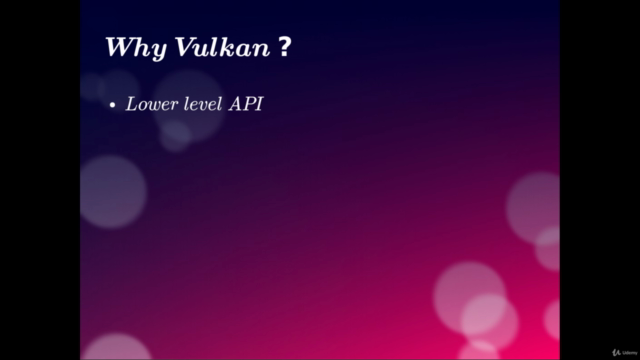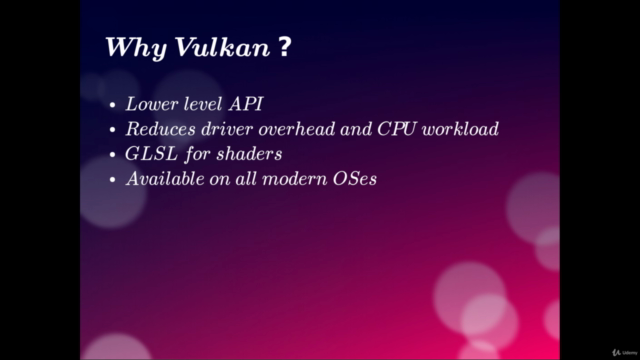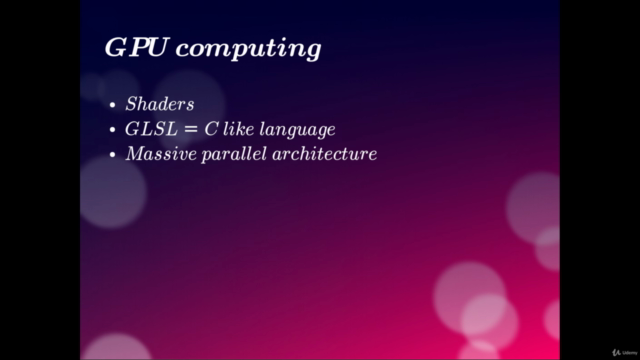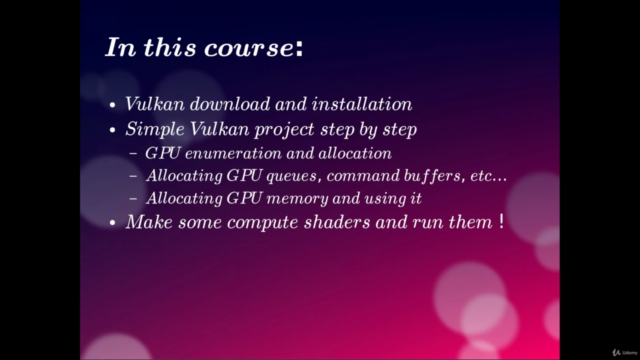GPU computing in Vulkan

Why take this course?
🚀 Course Title: GPU Computing in Vulkan: The Ultimate Way to Parallel Computing 🎓
Headline: Dive into High-Performance Parallel Processing with Vulkan API – No Fluff, Just Coding!
Course Description:
Embark on a journey through the world of GPU computing and master the art of leveraging Vulkan API for high-performance parallel processing. This course is a hands-on guide designed for developers who prefer to dive straight into coding rather than wade through extensive theory. We'll take you from writing a simple Makefile to executing a compute shader that performs complex calculations at blazing speeds on the GPU.
📚 What You'll Learn:
-
Modern Graphics Computing: Understand Vulkan, the cross-platform 3D graphics and computing library, which is the successor to OpenGL, released in 2016 and now available on most modern operating systems.
-
C Language Focus: All functions and operations are demonstrated using C language in a clear and concise manner, making it accessible even if your specialty isn't C. Knowledge of programming with static libraries is beneficial but not mandatory.
-
Practical Learning: The course emphasizes hands-on learning to achieve visible results quickly. You'll avoid the usual challenge of wading through hundreds or even thousands of lines of code before you understand how it all fits together.
Course Highlights:
-
System Exploration: Read and utilize properties and limits of the graphics adapters in your system to tailor your application's performance.
-
Device Management: Allocate a logical device and its execution queues efficiently for your GPU operations.
-
Memory Mastery: Manage GPU memory effectively, including reading, writing, and executing data within it.
-
Command Buffers & Queue Execution: Learn to create command buffers, record actions within them, and execute them on the GPU queue for real-time processing.
-
Parallel Processing: Implement and execute data processing in a shader, unlocking the power of parallel computing on the GPU.
-
Visual Results: Generate fractal images in the GPU, providing a tangible output that demonstrates the power of GPU acceleration.
-
Performance Comparison: Compare the performance between GPU and CPU computing to understand the advantages of GPU computing.
By the End of This Course:
You will not only be able to write and execute your own compute shader using Vulkan, but you'll also gain a solid foundation for implementing 3D graphics in Vulkan. Whether you're looking to enhance your 3D applications or explore the realm of GPU computing, this course is your stepping stone to high-performance parallel processing with Vulkan API.
🌟 Enroll Now and Start Your Journey into the World of High-Performance Computing with Vulkan! 🌟
Course Gallery




Loading charts...